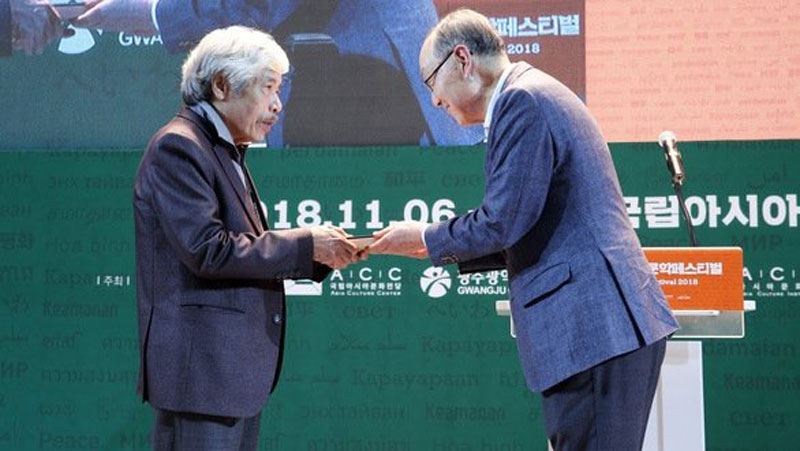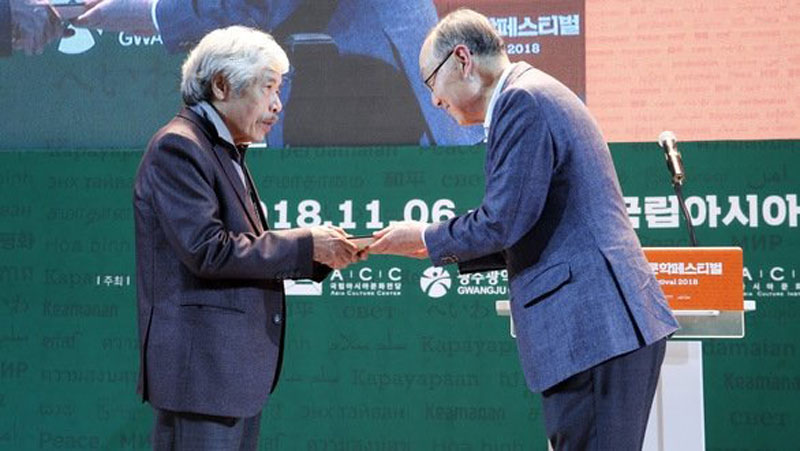


The novel, which tells the story of a soldier who grows reflective as he collects dead bodies after a battle, won the only prize at the Asia Literature Award 2018 during a recent ceremony in the RoK.
The winner was selected by a council of seven Korean writers and a publisher from all works available in the book market. Organisers invited nominated writers to the RoK for the award ceremony.
Ninh, whose real name is Hoang Au Phuong, was born in 1952. He is a novelist and writer of short stories best known for his aforementioned award-winning first book, The Sorrow of War.
During the anti-American War, he served in the 27th Youth Volunteer Brigade. Of the five hundred who went to war with the brigade in 1969, he is one of just 10 who survived.
The Sorrow of War, written in the stream of consciousness style, first won the Vietnam Writers’ Association Award in 1991.
The writer and his novel also won the third Shim Hun Literary Award in the RoK in 2016 and the 2011 Asia Literature Award from the Nihon Keizai Shimbun in Japan, among other honours.

Author Bao Ninh (L) receives the Asian Literature Award for his internationally well-known novel The Sorrow of War.
Since its publication in 1990, the novel has been translated into many different languages and published in around 20 countries.
In the RoK, the novel was first available a long time ago, but the only accessible version was translated from the English version.
In 2012, it was translated directly from Vietnamese into Korean by Ha Jae-hong and published by Asia Publishing House.